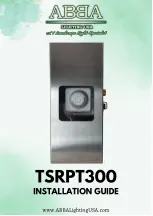
MFT-20 DSB Transceiver Kit
Page 4
To solder properly, you must use a high-quality solder for electronics use and the correct type of iron.
Use a small soldering iron with a fine, pointed tip. The soldering iron should be about 30 watts (if it is not
thermostatically controlled). Use only high-quality electronic type solder. NEVER use any extra flux. You
should hold the hot soldering iron in contact with both the circuit board and the component lead for about
two seconds to heat them up. Then, keeping the soldering iron in place, touch the solder at the junction
of the lead and trace and wait about two seconds or so until the solder flows between the terminal and
the trace to form a good joint. Now remove the soldering iron. The soldering iron should have been in
contact with the work piece for a total time of about 4-5 seconds. After soldering each joint, you should
clean the soldering tip, removing any excess solder. This prevents mixing in old solder and residues from
previous soldering operations.
Finding the correct component:
IC's
The component outline for the IC printed on the circuit board has a “U” shaped notch on one end,
indicating the end at which pin 1 of the IC is located. There is a similar notch on one end of the IC socket
that should be oriented over the “U” printed on the circuit board. Finally, pin 1 of the IC is also marked
with a small dimple or dot; this end of the IC should be oriented towards the notch in the IC socket or the
"U" of the component outline.
Diodes
Be careful to observe the correct polarity of the diodes. There is a black band towards one end of the
diode. This band should be oriented towards the line printed on the component outline of the circuit
board.
Electrolytic capacitors:
These must be placed with the correct polarity. The positive lead (+) is always the long lead. The
negative terminal (-) is the short lead and is marked by a stripe on the body of the capacitor. Make sure
that the positive lead of the capacitor goes through the hole marked with a "+" on the circuit board.
Coils and transformers:
You may find it convenient to wind and prepare all the coils and transformers before beginning to mount
the components. That way you won't have to stop and possibly lose concentration while winding them.
This is the part of the construction that some consider to be the most difficult. I personally find it to be
one of the easiest stages, and it can even be relaxing. Look for the most appropriate moment to do it,
and most importantly, take your time. The drawings and instructions in the manual will illustrate and
accompany you in the process.





































